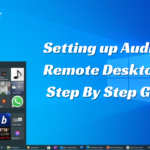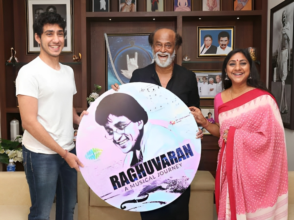Unlocking Multichannel Engagement: Insights from Patrick Cedrowski, a Seasoned CTO in Tech
A chief technology officer (CTO) plays a significant role in the tech industry. With their extensive expertise, CTOs like Patrick Cedrowski provide valuable perspectives on dynamics such as multichannel engagement. In this article, Patrick Cedrowski explores multichannel engagement while highlighting metrics for success and adaptability to meet changing trends.
The Role of a Chief Technology Officer
Chief technology officers identify solutions that further goals, encouraging digital changes and new possibilities across initiatives. In this critical role, the chief technology officer establishes a vision for technological leadership and ensures staying at the forefront of rapid shifts. Through strategic planning, the chief technology officer determines the optimal usage of technologies to boost efficiency and performance. They navigate digital projects, embracing cutting-edge advances fueling growth and competitiveness. Implementing data-driven processes and cross-team collaboration is crucial to optimization and scalability.
Multichannel Engagement
Multichannel engagement involves businesses connecting with customers across various avenues, such as email, entertainment platforms, websites, and mobile apps. This strategy recognizes the modern client’s preference for smooth transitions between platforms while communicating with an organization. Enterprises can nurture a customized and captivating user experience by skillfully capitalizing on diverse interaction avenues. Maintaining consistency in messages and branding across these avenues aids in building trust and loyalty among patrons.
Why it Matters for Businesses
Multichannel engagement is crucial for businesses aiming to improve client engagement, obtain valuable insights into user behaviour, boost brand loyalty, and gain a competitive advantage in the market. Engaging customers across multiple contact points such as social media websites, email, and internet sites allows businesses to create a seamless and personalized experience that resonates with their target audience. These interactions offer data for evaluations to refine marketing strategies. Insights gained from multichannel interactions allow companies to understand preferences, anticipate needs, and provide customized messaging, leading to higher customer satisfaction and long-term loyalty.
Insights from a Seasoned Chief Technology Officer
Capitalizing on his extensive experience and technical proficiency, Patrick Cedrowski offers valuable insights and ideal techniques in multichannel engagement and technology solutions.
Experience and Expertise in Multichannel Engagement
With a history of spearheading digital shifts and improving user interfaces, Patrick Cedrowski’s prowess distinguishes him as a progressive leader in the industry. His creative technique for synchronizing channels for viability and client satisfaction has gained widespread acclaim. Patrick’s understanding of advanced processes and customer behaviour allows him to design systems that incorporate innovations into his strategies.
Key Strategies and Best Practices
It is essential to have a well-thought-out plan to synchronize all channels and ensure consistent customer engagement. By utilizing data examinations, organizations can achieve a more profound understanding of customer preferences and conduct, empowering the execution of more customized and focused systems. Patrick’s method focuses on proactively identifying potential issues and creating solutions ahead of time rather than responding to developing problems.
Implementing Multichannel Engagement in Your Business
To successfully implement multichannel engagement in a business, it is essential to:
- Develop cross-functional collaboration
- Establish a robust digital presence
- Strategically map out the customer journey to provide a tailored experience
Steps to Incorporate Multichannel Engagement
The integration of multichannel engagement involves various customer touchpoints, solutions to integrate communication, gauging satisfaction, and maintaining brand identity across all channels to provide an impactful experience. This process analyzes the numerous touchpoints through which customers interact with the brand, including social media, email, website, and personal exchanges. Understanding engagement dynamics across these channels is fundamental when devising customized communication that resonates with the target audience. Solutions that seamlessly integrate are crucial, as well as maintaining consistent messaging while ensuring a good experience. By leveraging technology and automation, organizations can streamline interactions, provide personalized experiences, and improve satisfaction and loyalty.
Measuring Success and Adapting to Changes
To measure success, organizations must track engagement metrics essential to understanding customer interactions, gather customer input through various feedback forms, and skillfully utilize analytics to gain meaningful insights to guide decisions. However, successfully measuring engagement is only the starting point; ongoing improvements through monitoring, evaluation, and adaptation are essential to thrive in constantly shifting dynamics and evolving markets.
Metrics to Track and Analyze
Key indicators that should be monitored and analyzed in multichannel engagement are customer satisfaction ratings, conversion percentages between platforms, and performance analytics. Tracking these metrics is essential for assessing how effective strategies and customer engagements have been. Satisfaction levels are pivotal benchmarks for determining the success of multichannel engagement initiatives. They provide valuable insights into how well an organization meets customer expectations and addresses their needs. Conversion rates are core to quantifying the productivity of various channels. Performance tracking is crucial as it offers real-time data on how successfully engagement strategies perform. This data allows businesses to pinpoint areas for improvement and optimize their approaches.
Flexibility in Multichannel Engagement Strategies
Maintaining multichannel engagement is essential for adapting to evolving technological trends, conducting thorough market research, and implementing management processes that align communication avenues with shifting customer preferences and industry dynamics. Companies can effectively respond to customer needs and market changes by adopting a flexible approach, ensuring their multichannel strategies stay relevant and impactful. Agile processes allow organizations to rapidly test new ideas, adjust strategies based on real-time data, and iterate on their methods to improve engagement across platforms. This adaptability is crucial in a rapidly changing digital landscape where consumer behaviour and technological advancements constantly evolve. Integrating agile practices into multichannel engagement strategies allows businesses to maintain competitiveness, respond to emerging trends, and provide personalized and seamless experiences to their target audience.
















